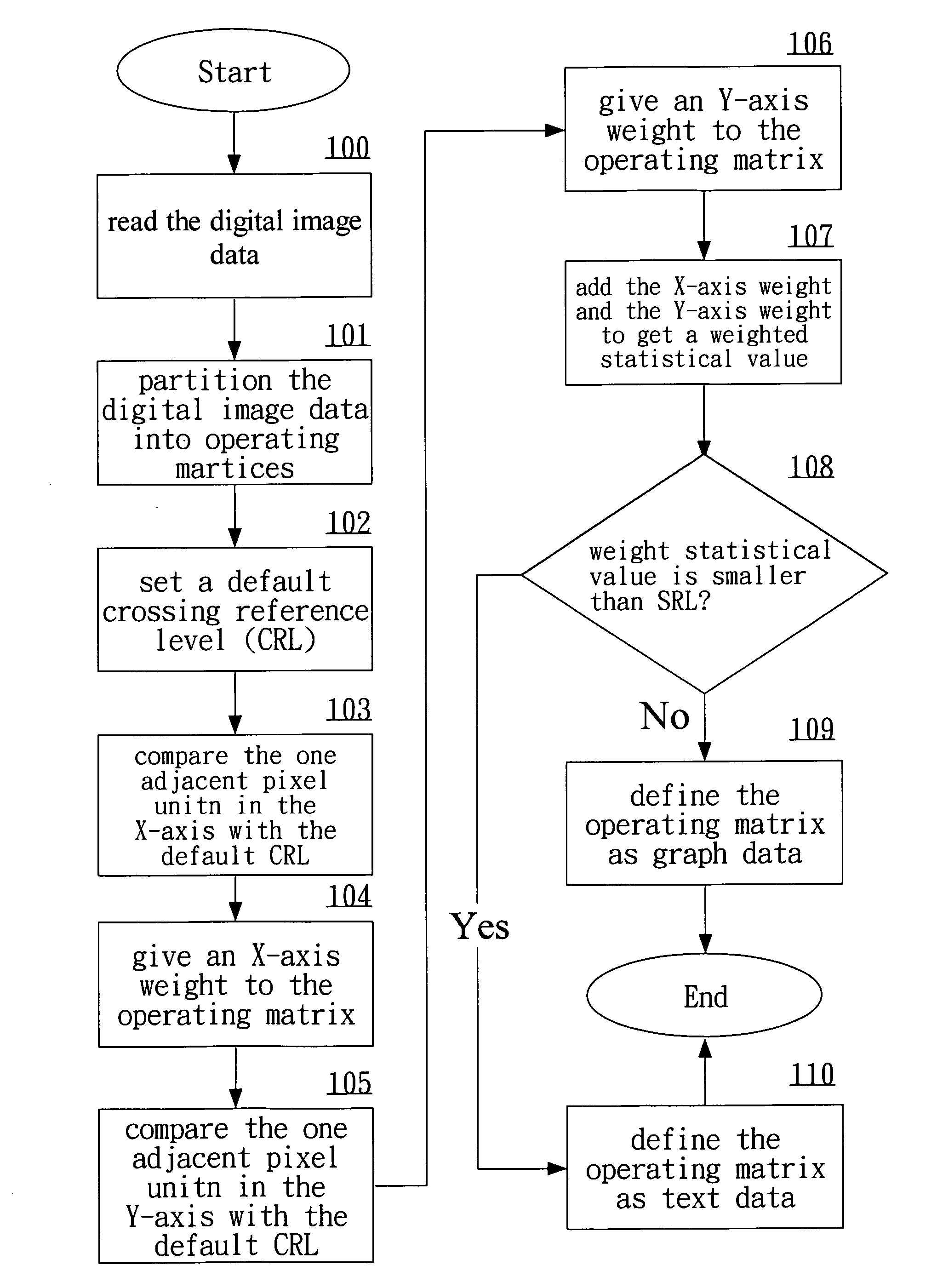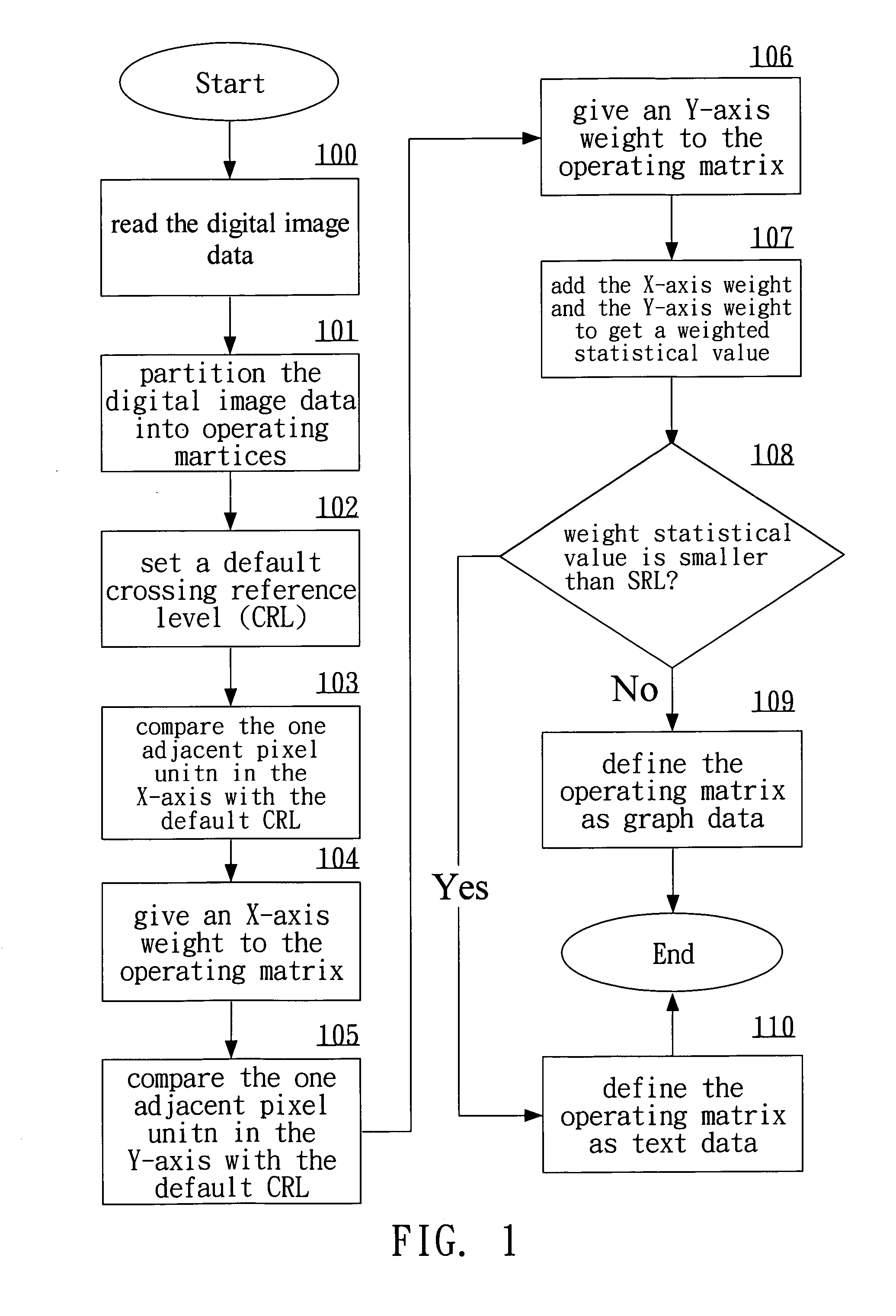Method of separating text and graphs in digital image data
a digital image and graph technology, applied in the field of image processing methods for digital image data, can solve the problems of high hardware cost, complicated process, and difficult to realize, and achieve the effects of reducing the cost of the processing chip, speeding up the operation, and simplifying the procedure and algorithm
- Summary
- Abstract
- Description
- Claims
- Application Information
AI Technical Summary
Benefits of technology
Problems solved by technology
Method used
Image
Examples
Embodiment Construction
[0018] We refer to FIGS. 1 to 7 to explain the procedure in the disclosed method of graph-text separation in digital image data. The method first read in digital image data provided by an electronic device such as a computer system, a printer, or a scanner (step 100). The digital image data are then partitioned into several operating matrices according to a default separating parameter (step 101). Each operating matrix consists of n×n pixel units, each of which contains X and Y coordinates. Moreover, each pixel unit has a digital characteristic value (DCV), which may be the level of gray, the RGB values, and the color saturation. In other words, the DCV gives the pixel characteristic of a pixel unit.
[0019] After step 101, one sets a default crossing reference level (CRL) (step 102) for performing a comparison analysis. The comparison analysis is done for adjacent two pixel units in the X direction or Y direction of the operating matrix. That is, we take two adjacent pixel units in ...
PUM
 Login to View More
Login to View More Abstract
Description
Claims
Application Information
 Login to View More
Login to View More - R&D
- Intellectual Property
- Life Sciences
- Materials
- Tech Scout
- Unparalleled Data Quality
- Higher Quality Content
- 60% Fewer Hallucinations
Browse by: Latest US Patents, China's latest patents, Technical Efficacy Thesaurus, Application Domain, Technology Topic, Popular Technical Reports.
© 2025 PatSnap. All rights reserved.Legal|Privacy policy|Modern Slavery Act Transparency Statement|Sitemap|About US| Contact US: help@patsnap.com



